Can You Drive with a Bad Alternator? The Risks and Consequences
Your car’s alternator is a crucial component that keeps it running smoothly. But what happens when it starts to fail?
Can you drive with a bad alternator? Yes, you can drive with a bad alternator, but it is not recommended. A bad alternator can cause a car’s battery to lose power, potentially leaving you stranded. A failing alternator can also cause other parts of the electrical system to malfunction, leading to decreased performance and even safety hazards.
This article will explore the signs of a bad alternator, the consequences of driving with it, and the steps you can take to repair or replace it. Keep reading to ensure your car’s electrical system runs at its best.
Can You Drive with a Bad Alternator?
Yes. It may be possible to go a short distance, but driving with a bad alternator is generally not recommended. For example, depending on the severity, you could do 2 to 3 miles or even 30 miles.

Accordingly, continuing to operate a vehicle with a failing alternator can cause further damage to the car. Moreover, it would potentially put the driver and passengers in danger. Hence, it is best to have the alternator checked and repaired or replaced as soon as possible.
Consequences of Driving with a Bad Alternator
Here are the risks of driving with a damaged alternator:

1. Poor Car Performance
The alternator supplies power to the car’s electrical systems, such as the ignition, fuel injection, and emission control systems. With a bad alternator, these systems may not function properly. And that will lead to poor performance and reduced fuel efficiency. It’s like having a sports car but with a flat tire. It just won’t run as smoothly as it should.
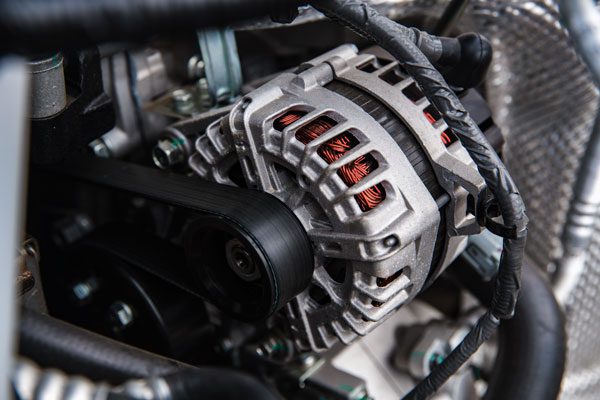
2. Potential Damage to Other Parts of the Car
If the alternator is not providing enough power to the car’s electrical systems, it can cause the battery to die. This can damage the battery and other components that rely on it for energy, such as the starter and power steering.

3. Safety Risks
Accordingly, if the alternator is not providing enough power to the car’s electrical systems, it can cause the headlights to dim or flicker. As a result, it will be difficult to see at night or in poor visibility.
Additionally, if the alternator is not providing enough power to the car’s electronic systems, it can cause the power steering to fail. This will make the vehicle difficult to control.
Signs and Symptoms that your Alternator is Damaged
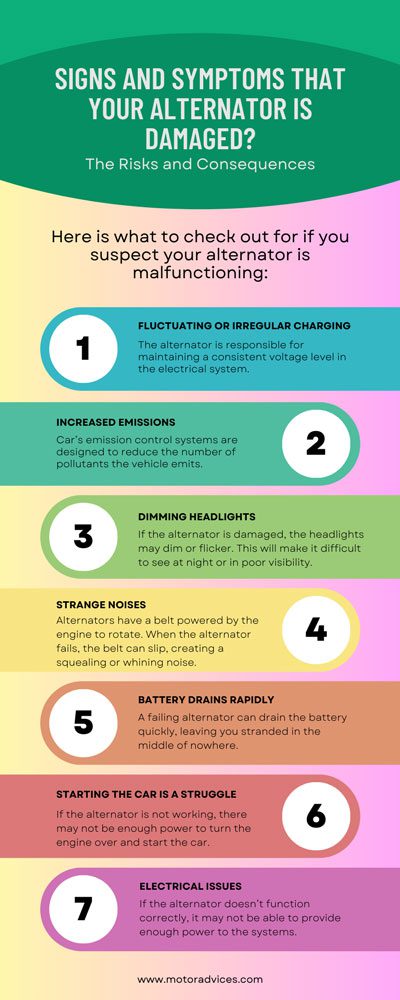
Here is what to check out for if you suspect your alternator is malfunctioning:
1. Fluctuating or Irregular Charging
The alternator is responsible for maintaining a consistent voltage level in the electrical system. If it doesn’t work properly, it may not be able to provide a constant charge. This will result in fluctuating or irregular charging.
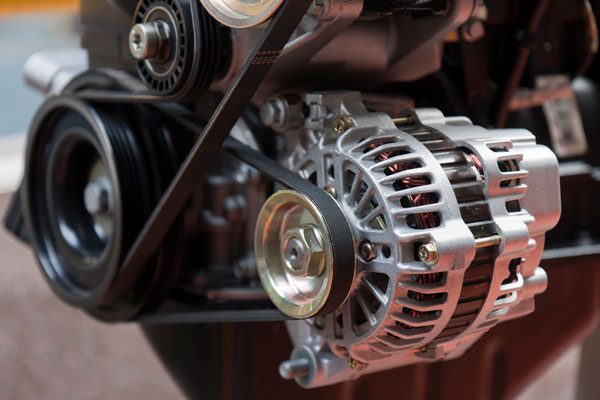
2. Increased Emissions
Car’s emission control systems are designed to reduce the number of pollutants the vehicle emits. When the alternator doesn’t work properly, these systems may not function correctly. And you will see this leading to increased emissions and potentially causing the vehicle to fail emissions testing.
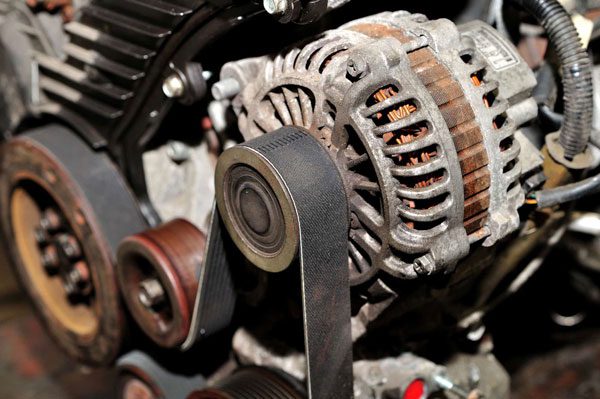
3. Dimming Headlights
If the alternator is damaged, the headlights may dim or flicker. This will make it difficult to see at night or in poor visibility.
4. Strange Noises
Alternators have a belt powered by the engine to rotate. When the alternator fails, the belt can slip, creating a squealing or whining noise. Additionally, the alternator’s internal bearing may wear out and make noise.
5. Battery Drains Rapidly
A failing alternator can drain the battery quickly, leaving you stranded in the middle of nowhere. Without the alternator, your battery will not be recharged, leaving you with no power to keep your car going.
6. Starting the Car is a Struggle
If the alternator is not working, there may not be enough power to turn the engine over and start the car.

7. Electrical Issues
If the alternator doesn’t function correctly, it may not be able to provide enough power to the systems. There will be various electrical issues, such as power windows not working.
What Causes an Alternator to Malfunction?
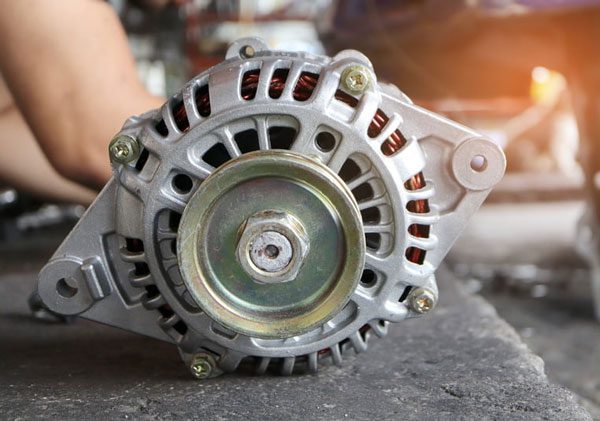
Here are possible reasons why your alternator is malfunctioning:
1. Wear and Tear over Time
An alternator is a complex piece of machinery subjected to a lot of wear and tear over time. The constant movement of the alternator’s internal parts can cause wear and tear, leading to a malfunction.
2. A Malfunctioning Voltage Regulator
The voltage regulator is a vital alternator component that controls the output voltage. A malfunctioning voltage regulator can cause the alternator to produce too much or too little voltage, leading to a malfunction.
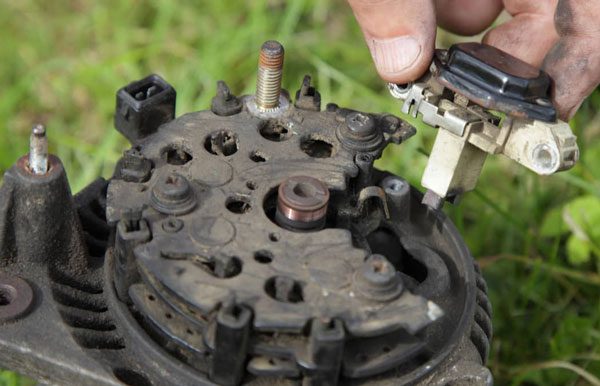
3. A Damaged Diode
The diode is a component of the alternator that converts alternating current (AC) to direct current (DC). So a damaged diode can prevent energy from flowing into the circuit. This will result in power problems.
4. Corrosion and Debris Build-up
An alternator can malfunction due to the build-up of corrosion and debris over time. This can occur due to exposure to moisture, dirt, or other contaminants.
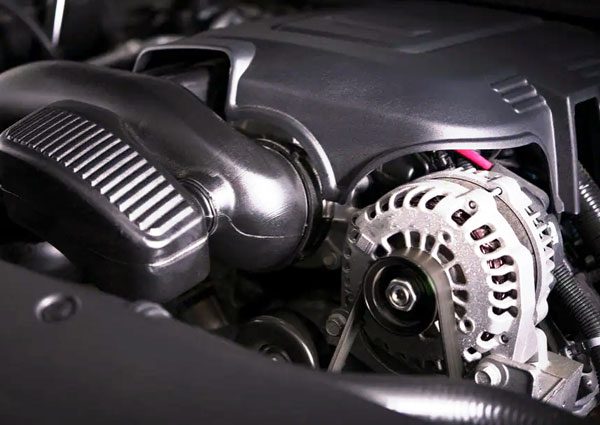
5. Faulty Battery or Connections
A weak or damaged battery can put a strain on the alternator. Loose or corroded battery connections can also cause the alternator to malfunction.
6. Overloading the Alternator
An alternator can malfunction due to being overloaded by using too many electrical devices while the engine is running. This can occur when using multiple accessories such as lights, air conditioning, or power windows while the engine is running, putting a strain on the alternator.
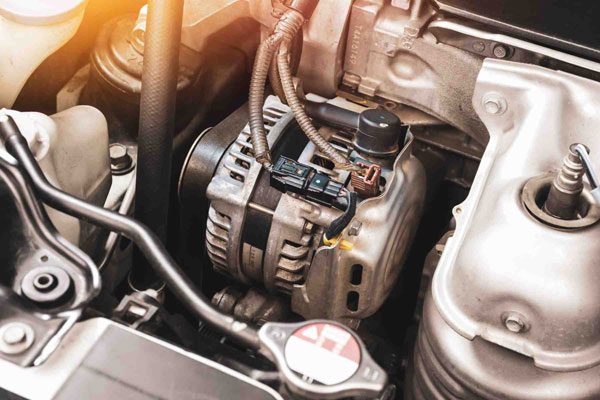
7. Damaged or Loose Drive Belt
If the drive belt is damaged or loose, it can prevent the alternator from producing enough power. A damaged drive belt can occur due to wear and tear or exposure to heat, chemicals, or other harmful elements.
If you’re experiencing issues with your car, you might be wondering if you can continue driving with a faulty alternator. While it’s possible, it’s not recommended for the long-term health of your vehicle. If you’re looking for more information on driving without certain components, check out our articles on driving without power steering and driving without a muffler. Our article on driving without power steering discusses the impact on your vehicle’s handling and safety, while our article on driving without a muffler explores the legal and environmental implications. With these resources, you can make an informed decision on how to proceed with your car troubles.FAQs
Here are some frequently asked questions regarding alternator malfunction issues. Check them out.
Yes you can. You only need to perform some basic tests. This can include checking the battery voltage with a multimeter and testing the alternator’s output voltage. Check the alternator belt for any signs of wear or damage. You can also check for any warning lights or codes on the dashboard.
Once you have identified the root cause of the problem, you can start making repairs. If the problem is caused by a worn-out part, such as the alternator belt, you can replace it with a new one.
The average lifespan of an alternator is 150,000 miles. This is just a theoretical figure. The real mileage will depend on how often you dry, what electrical systems you have installed, and the quality of your alternator.
Conclusion
The above information puts to bed the question, can you drive with a bad alternator? You may go with such a component, but there are consequences and risks that you will have, as discussed above.
We recommend following your car’s maintenance schedule to avoid being in such a situation. If you notice any signs of a bad alternator, do not drive the vehicle for long distances. Instead, have it checked and fixed as soon as possible.

